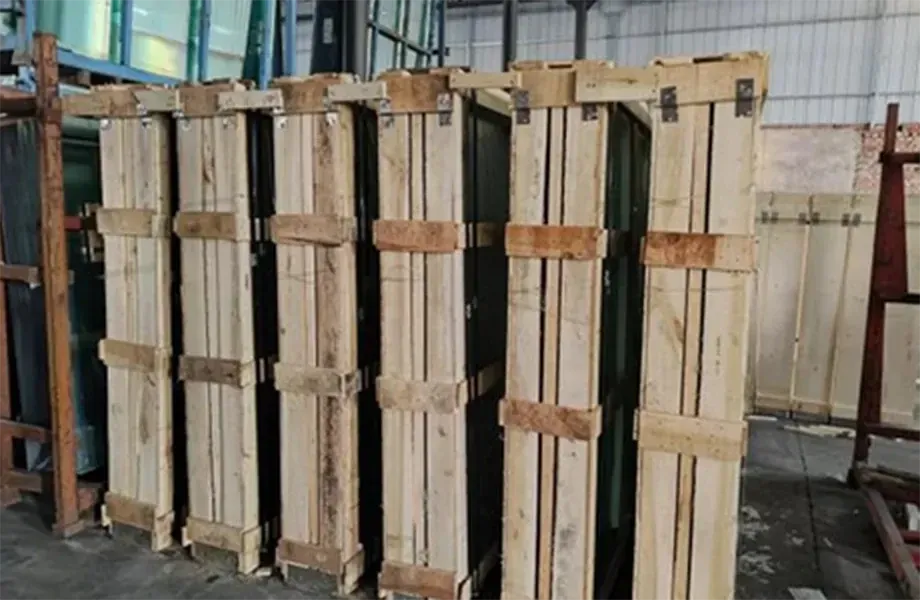Dec . 06, 2024 01:53 Back to list
Understanding the Significance of Low Emissivity Glass in Modern Architecture and Design
Understanding Low Emissivity Glass Meaning and Benefits
In the realm of modern architecture and building design, the choice of materials plays a crucial role in energy efficiency and sustainability. One such material that has gained significant attention is low emissivity (low-E) glass. While often referred to in the context of energy-efficient buildings and windows, many people may not fully understand what low-E glass entails and the substantial benefits it provides. This article delves into the meaning of low emissivity glass, its properties, and its applications.
What is Low Emissivity Glass?
Low emissivity glass is a type of energy-efficient glass that is coated with a thin layer of metallic oxide, which significantly reduces its emissivity—a measure of a material's ability to radiate heat. Emissivity values range from 0 to 1, with lower values indicating a greater ability to reflect thermal energy. Low-E glass typically has an emissivity value of around 0.1 to 0.25, meaning it reflects a significant portion of infrared radiation while still allowing visible light to pass through.
How Low-E Glass Works
The functionality of low-E glass is rooted in its unique coating. When sunlight strikes a low-E coating, the glass allows visible light to enter while reflecting heat back to its source. In cold weather, this means that heat generated inside a building is retained, enhancing interior comfort without excessive heating costs. Conversely, during hot weather, low-E glass can reject solar heat, reducing the need for air conditioning. This thermally efficient behavior makes low-E glass a prime candidate for energy-efficient windows and facades.
Benefits of Low Emissivity Glass
low emissivity glass meaning

1. Energy Efficiency One of the most significant advantages of low-E glass is its ability to enhance energy efficiency. By minimizing heat loss in winter and reducing heat gain in summer, buildings equipped with low-E windows can achieve substantial energy savings. This not only lowers utility bills but also reduces the environmental impact by lessening reliance on heating and cooling systems.
2. Comfort Low-E glass contributes to improved indoor comfort by maintaining consistent temperatures throughout a building. Reduced drafts in winter and minimized heat build-up in summer create a more pleasant living or working environment. Moreover, occupants can enjoy natural light without sacrificing comfort.
3. UV Protection In addition to thermal benefits, low-E glass also offers protection against harmful ultraviolet (UV) rays. By blocking a significant portion of UV radiation, it helps prevent furniture, flooring, and artwork from fading, thereby extending the lifespan of interior elements.
4. Environmental Impact Utilizing low-E glass aligns with sustainable building practices. By lowering energy consumption, buildings can reduce their carbon footprint and contribute to a more sustainable future. Many governments and organizations recognize the benefits of low-E glass and may offer incentives or certifications for energy-efficient designs.
5. Aesthetic Versatility Low-E glass is available in various styles and designs, making it a versatile choice for different architectural applications. It can be used in residential homes, office buildings, commercial spaces, and even in facades and skylights, offering both function and beauty.
Conclusion
In summary, low emissivity glass represents a significant advancement in building materials, combining energy efficiency, comfort, UV protection, and environmental sustainability. As building codes and consumer awareness increasingly prioritize energy-efficient solutions, low-E glass stands out as a smart investment for both residential and commercial applications. Understanding its properties and benefits is essential for anyone interested in the future of sustainable architecture and energy-efficient living. As we continue to strive for a more sustainable future, utilizing low-E glass will play a vital role in reducing energy consumption and enhancing the overall quality of our built environment.
-
Safety and Style with Premium Laminated Glass Solutions
NewsJun.24,2025
-
Reinvents Security with Premium Wired Glass
NewsJun.24,2025
-
Premium Float Glass Line for Modern Architecture
NewsJun.24,2025
-
Low Emissivity Glass for Energy-Efficient Architecture
NewsJun.24,2025
-
High-Performance Insulated Glass Solutions for Modern Architecture
NewsJun.24,2025
-
Elevates Interior Style with Premium Silver Mirror
NewsJun.24,2025
Related PRODUCTS














